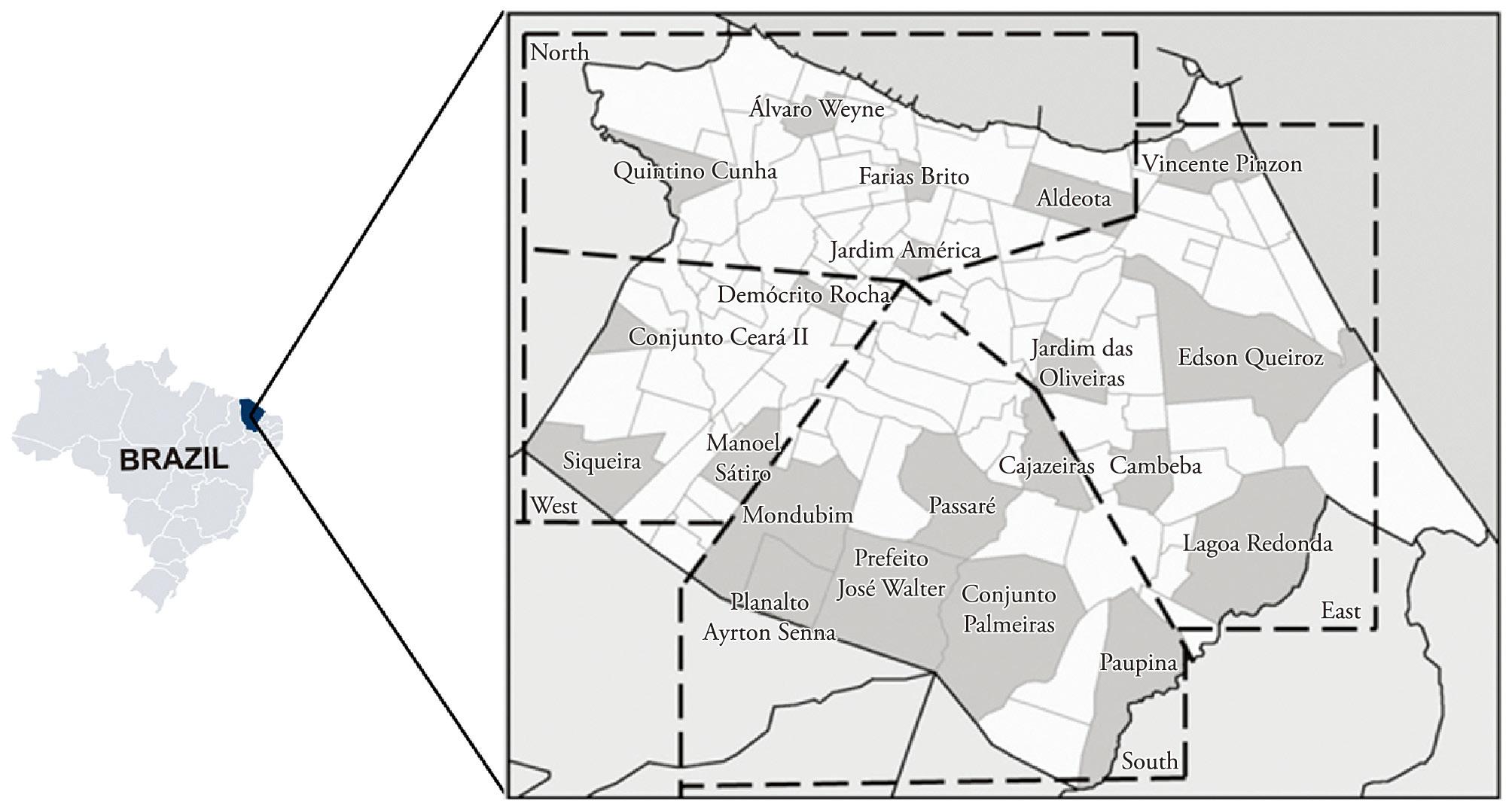The objective of this study was to perform an epidemiological survey to determine the areas at risk of visceral leishmaniasis through the detection and quantification of natural infection by Leishmania infantumin Lutzomyia longipalpis. The sandflies were captured between February 2009 and January 2010, at 21 sites in four regions of the Fortaleza municipality. Samples were screened for the presence of Leishmania DNA by Real Time PCR (qPCR), amplification of kDNA minicircle sequence. Out of the 123 pools of analyzed sandflies, 45 were positive for L.infantum, and the minimum infection rate was 3.7%. In the north, south, east and west regions, the pool screen assay predicted sand-fly infection prevalence of 3.4%, 4.7%, 4.9% and 8.4%, respectively. The parasite load ranged from 2.45 ± 0.96 to 2,820,246 ± 106,072. No statistical differences were found with respect to the frequency of sand-fly infection between the regions (P=0.3014), seasons (P = 0.3906) or trap locations (P = 0.8486). Statistical differences were found with respect to the frequency of sand-fly infection between the two seasons only in the west region (P=0.0152). The qPCR was able to detect and quantify L. infantum in L. longipalpis, therefore succeeding in identifying the areas of greatest risk of VL transmission.
Leishmania infantum ; Lutzomyia longipalpis ; minimum infection rate; qPCR

